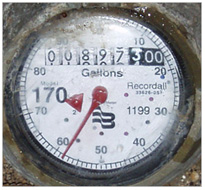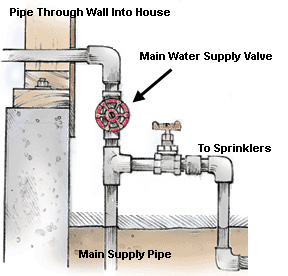We do Slab Leak Repairs in Hours… NOT Days!
If you have hot areas on your floor, wet spots, high gas and water bills or hear water running you may have what is known as a slab leak, a hole in one of the copper water lines running below your concrete floor.
We will locate your leak using the latest in acoustic leak detection and line tracing equipment. Once the leak is located and the line is isolated we can provide a quote to repair the leaky pipe or to re-route it so you won’t have the same problem again.
We specialize in slab leak detection and repair, you will not find better pricing or service any place else in The Bay Area
How to Check for a Water Leak
Finding water leaks can save you water, which means saving money on water and sewer bills. Follow these easy steps to determine if you have a leak in a domestic or a sprinkler irrigation system. Follow these steps to find out if your system has sprung a leak:
- Step 1: It is essential that you turn off all appliances that use water so that you can be sure that your water is not being used. This includes both inside and outside of the home. Sinks, showers, washing machines and sprinkler systems require manual shutoff before you look for leaks.

- Step 2: Turn your attention to your meter box by removing the lid and lifting up the protective cover (see photo above).

- Step 3: Watch your meter! The leak indicator is either a silver and black or red disk. If the disc is spinning even when all water using appliances are switched off, then you have a leak. If the meter dial is moving, then that also indicates a leak. If you see no movement, leave your appliances switched off and check again in ten minutes. A slow leak will only move the indicator slowly. If after ten minutes there is still no movement, then you have no leak. Otherwise, continue to step 4.

- Step 4: If you identify a leak, then you need to find your main shut-off valve, which is often located by the hose bibb (see photo).
- Step 5: Rotate the valve to turn it off.
- Step 6: Ensure that your water is switched off by using a faucet in the house. It may take a few moments for the residual water to run off, but if it does not, then your shut-off valve may be broken. If the water stops, then continue.
- Step 7: Check for water running between the meter and the shut-off valve by returning to the meter. If the indicator or hand is still moving, then the leak is occurring between the meter and the shut-off. If it isn’t, then the leak is likely to be elsewhere in the house, such as a washing machine, toilet or faucet.
- Step 8: You can easily check a toilet for leaks by flushing then waiting for the reservoir to fill. By adding food coloring to the water and waiting for around 30 minutes, a leak in your flapper valve can be identified by checking the color of the water in the bowl. If the water has changed color, then replace your flapper valve.
If you suspect you have a leak please contact our office at (800) 616-6096 and we will do a courtesy leak check in your home for you.
Call our Leak Detection Professionals Today!
| Concord Leak Detection | (925) 675-1110 |
| Walnut Creek Leak Detection | (925) 932-8740 |
| Pleasant Hill Leak Detection | (925) 676-0125 |
| Pittsburg Leak Detection | (925) 756-2354 |
| Antioch Leak Detection | (925) 756-2356 |
| Oakley Leak Detection | (925) 522-0741 |
| Brentwood Leak Detection | (800) 616-6096 |
| Alamo Leak Detection | (925) 522-0741 |
| Danville Leak Detection | (925) 933-8740 |
| Castro Valley Leak Detection | (510) 500-5001 |
| Berkeley Leak Detection | (510) 244-4547 |



